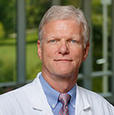“Life must be understood backwards; but ... it must be lived forward.”
-Soren Kierkegaard
He bumps the door open with his right hip and enters the operating room, water still dripping from his elbows. Toweling off his arms, he visually surveys the patient, the equipment, and the instruments. He is helped into his gown and gloves, and, while he waits for the rest of the team to get ready, he checks the lab reports and the CT scans one more time. The sounds in the room — the hum, the beeps, the ventilator, the chatter — are all familiar and correct. The patient has been positioned and the skin has been prepped. Everyone appears relaxed and ready.
The surgeon pauses and glances at a stack of papers on the table next to the door — one of the residents has evidently taken copious notes from textbooks about the type of surgical procedure they are going to perform today, creating a list of steps from incision to closure. The surgeon sets down the notes and steps to the operating table.
The sterile barriers are placed. The anesthesiologist adjusts the IV, re-checks the monitors, and clamps the drapes to poles. The nurse and the OR technologist pull the tables, stands, and trays into position. The cautery and suction are connected.
The residents and a medical student join him around the operating table. As he marks out the proposed incision, he assumes the familiar stance he will hold for the next two hours. He places his hand on the patent’s neck and assesses the enlarged masses below the surface.
"Here," he instructs the trainees. "Feel the tumors and how they sit below the muscles. Can you appreciate how they move in relationship with the other tissues?"
The trainees palpate the growths and nod. The surgeon remembers his own time as a resident. How he had loved learning all about this procedure! At the time, he, too, had carefully summarized and underlined all of the surgical descriptions he could find and had memorized step-by-step how-to lists. Later, he had carefully crafted his own description of the operation from start-to-finish, planning to use his notes as a set of imperatives to carry him safely through these intricate procedures when he was in practice on his own.
Now, he takes his turn palpating the neck. In his mind, the neck skin below his fingers has become translucent and all of the muscles, arteries, veins, nerves, bones, viscera, and the lymph nodes come into focus. He imagines how the structures are intertwining with each other and with the invasive tumors. As he stares at the neck, he visualizes how the dissection will look when the tumors have been removed and all of the structures explored.
At this point in his career, instead of working through the operation from beginning to end, he imagines the outcome first, realizing that there are hundreds of potential ways to achieve the final goal. Over the next two hours, he will attempt to discern the most efficient, safe, and effective route, all the while avoiding pitfalls, taking advantage of circumstances, and recalling prior experiences. He will dissect the diseased tissues, working from known to unknown, until the surgical field looks like the one he had visualized before the incision was made. The challenge remains thrilling and the anatomy remains elegant.
He releases his focus on the neck and the sounds in the room again reach his ears. The team is poised.
"Ready?" He has seen the final outcome. "Let's begin."
The following is feedback received for this blog:
Very nice.
- rl bates
http://rlbatesmd.blogspot.com/
Dr. Campbell -- Your latest post is a real gem. I've been thinking about it ever since reading it. It has applications in so many things that we do. I coach a men's sports team. I'm a big believer in envisioning exercises. Yet, envisioning is nothing without the repetition that we do at practice to hardwire actions. And, I'm a parent and your post had me thinking about that as well.
- Chris
Beautifully written, Bruce.
- Paul Levy
www.runningahospital.blogspot.com
This was truly a compelling read!
- sterileeye
http://sterileeye.com
